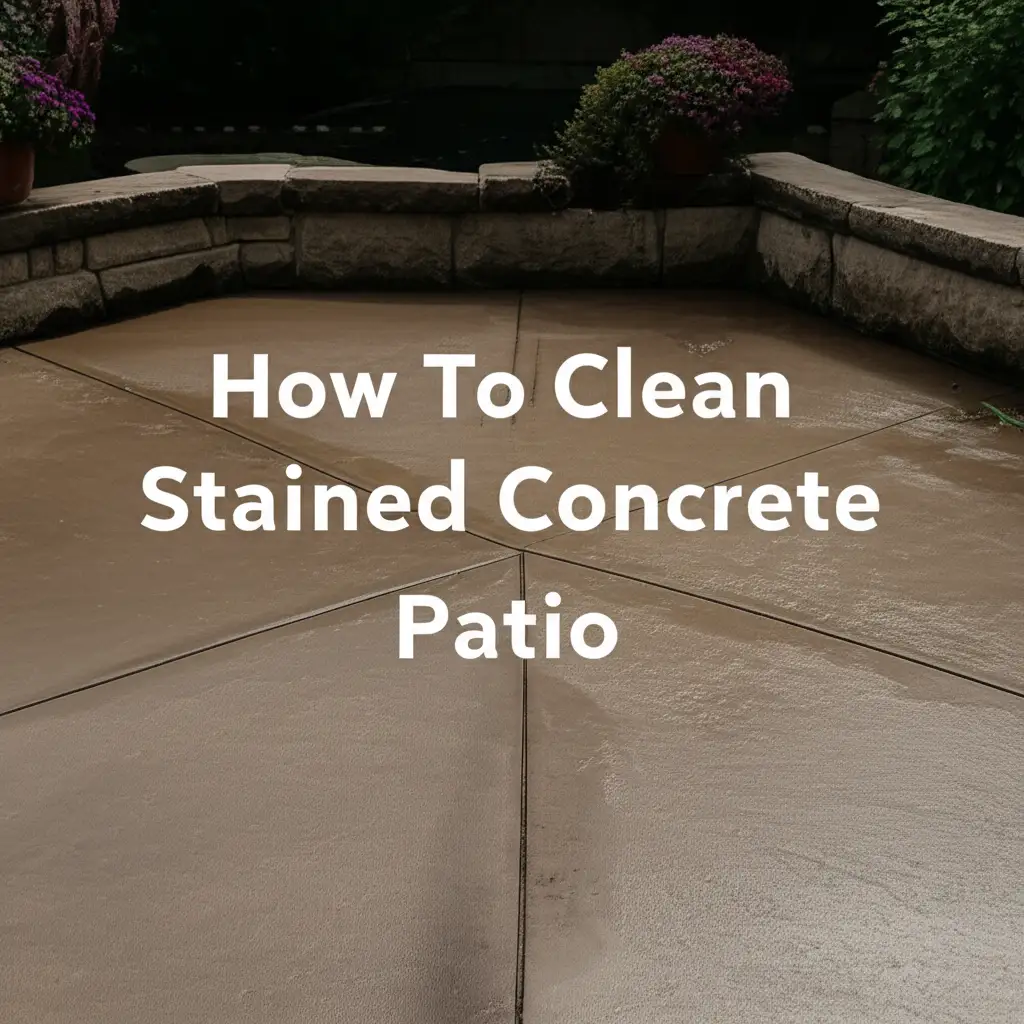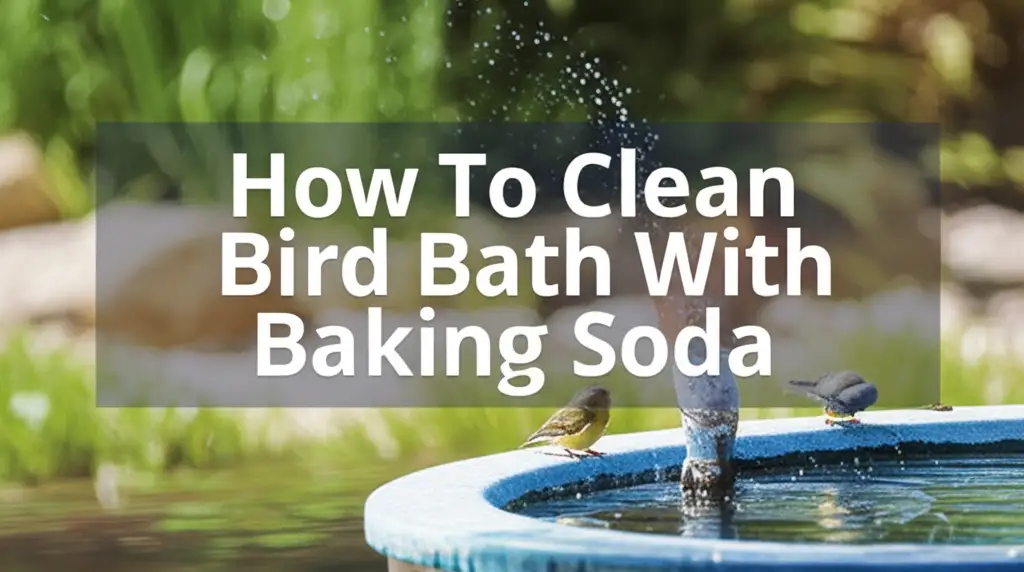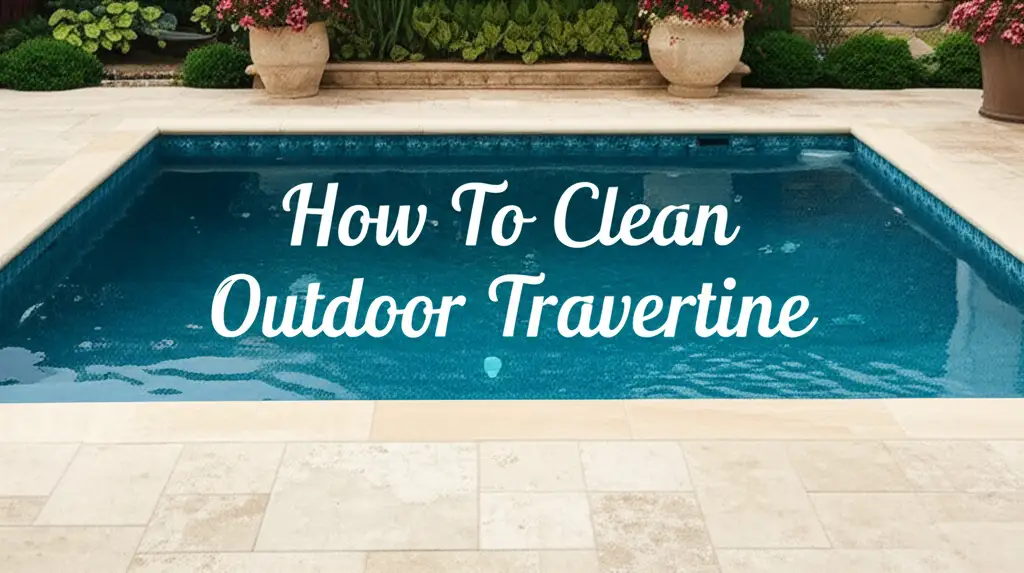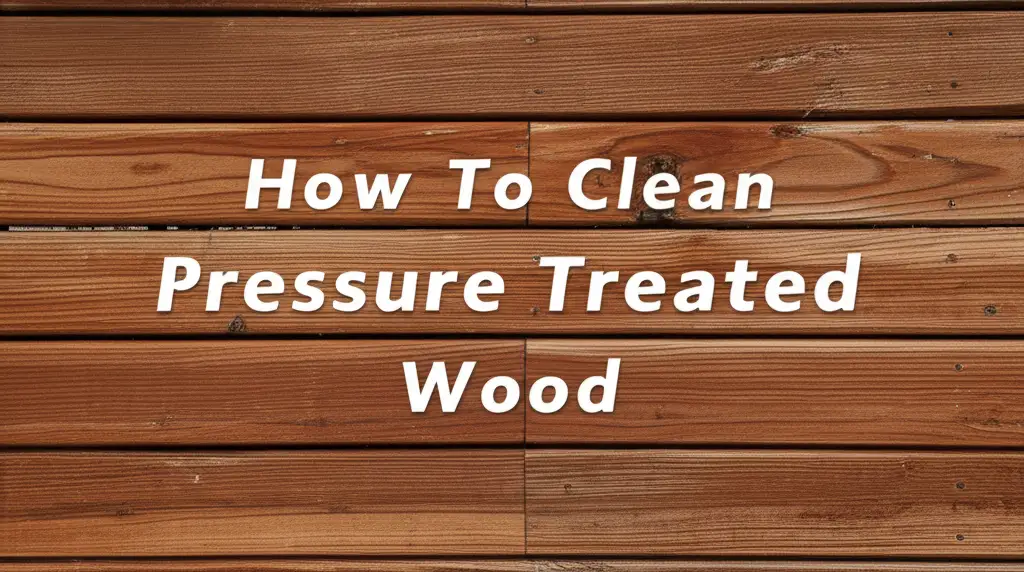· Outdoor Maintenance · 15 min read
How To Clean Moss Off Pavers
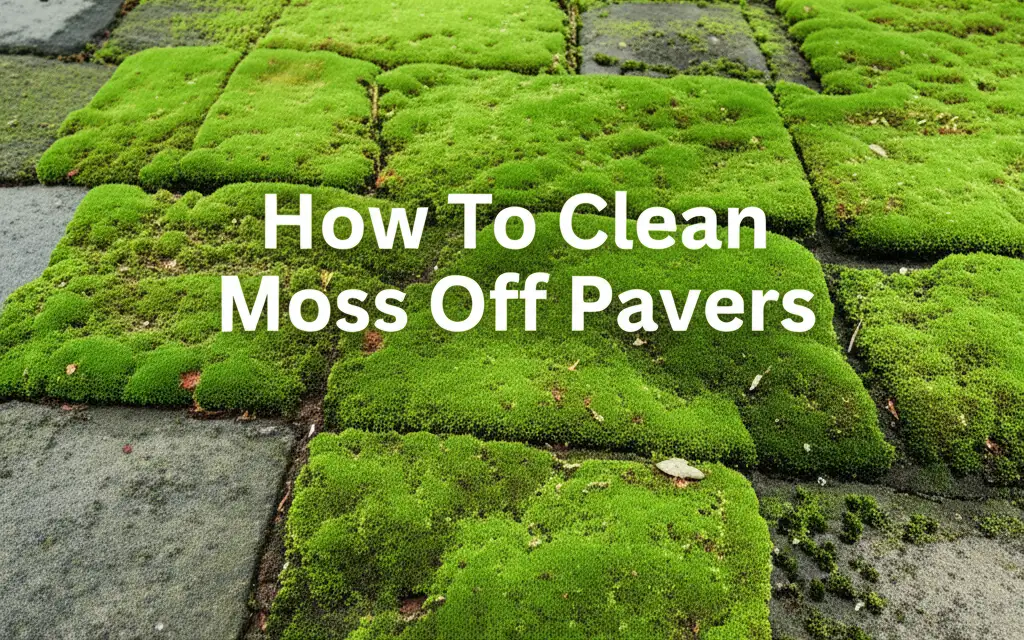
Restore Your Pavers: How To Clean Moss Off Pavers Effectively
Moss can turn your beautiful paver patio or walkway into a slippery, green mess. This fuzzy growth thrives in damp, shady conditions, clinging stubbornly to your hardscapes. It does not just look bad; moss also makes surfaces unsafe. Ignoring it can lead to damage to your pavers over time. I know the frustration of seeing green patches spread across my outdoor spaces.
This guide helps you tackle moss directly. We will explore various ways to clean moss off pavers, from simple scrubbing to advanced solutions. We cover tools, safety, and different cleaning methods. You will learn how to keep your pavers looking great and prevent moss from returning. Let us get your pavers clean again!
Takeaway
- Assess the Problem: Identify the moss type and extent of growth.
- Gather Tools: Collect brushes, scrapers, a pressure washer (optional), and cleaning solutions.
- Choose Your Method: Select between manual removal, natural solutions, or chemical treatments.
- Prioritize Safety: Wear protective gear and protect surrounding plants.
- Prevent Recurrence: Improve drainage, increase sunlight, and consider sealants.
Clear and Concise Answer
To clean moss off pavers, begin by scraping or brushing away loose growth. Then, apply a cleaning solution like diluted white vinegar, baking soda paste, or a commercial moss killer. Let it sit, scrub as needed, and rinse thoroughly. Regular maintenance and proper drainage will prevent regrowth.
Understanding Moss Growth on Pavers: Why It Happens
Moss is a simple plant. It does not have roots like other plants. Instead, it attaches to surfaces with tiny rhizoids. Moss loves moisture and shade. These are the main conditions that make your pavers a perfect home for it. Understanding these factors helps you clean moss off pavers and keep it away.
Pavers are often porous. This means they can hold water. Over time, dirt and organic debris collect in paver joints and on their surface. This creates an ideal bed for moss spores to land and grow. Poor drainage causes water to sit on your pavers after rain. Areas under trees or near walls get less sunlight. Both conditions encourage moss.
Identifying Different Types of Moss
Many types of moss can grow on pavers. Some look like a soft, green carpet. Others appear as dark, crusty patches. Common types include cushion moss or sheet moss. Cushion moss grows in dense, round clumps. Sheet moss spreads thinly and broadly. Knowing the type does not change the cleaning method much. All moss indicates too much moisture.
Environmental Factors Promoting Moss
Several environmental factors invite moss to your pavers. First, high humidity and regular rain keep surfaces wet. Second, insufficient sunlight prevents surfaces from drying out. Third, compacted soil around pavers can hinder proper drainage. Fourth, nutrient-rich debris like fallen leaves or pine needles on the pavers feed the moss. Lastly, uneven paver surfaces or wide gaps between pavers can trap water and debris, promoting growth. Address these factors to stop moss from returning.
Essential Tools and Safety Gear for Moss Removal
Before you start cleaning moss off pavers, gather the right tools. You also need to protect yourself and your surroundings. Using the correct gear makes the job easier and safer. Safety always comes first when working with chemicals or powerful tools.
Always read instructions on cleaning products. Some products need more protection than others. Make sure children and pets stay away from the work area. This helps ensure a smooth and safe cleaning process.
Basic Cleaning Tools You Will Need
You will need several basic tools to clean moss off pavers effectively. A stiff-bristled brush is essential for scrubbing. A wire brush works well for stubborn patches in joints. A garden hose with a spray nozzle helps rinse surfaces. For larger areas, a pressure washer can save time. Make sure your pressure washer has different nozzle settings. You might also need a flat-edged scraper or an old trowel to dig out moss from cracks. Buckets for mixing solutions are also useful.
Protecting Yourself and Your Landscape
Safety gear protects you during the cleaning process. Wear gloves to shield your hands from chemicals and rough surfaces. Eye protection is important to prevent splashes or debris from entering your eyes. Consider a face mask if you are working with powders or strong chemicals. For pressure washing, wear sturdy, closed-toe shoes. These protect your feet from the powerful water stream.
Protect your surrounding landscape too. Cover delicate plants with plastic sheeting if using strong cleaners. Divert runoff water away from garden beds. Many moss killers can harm other plants. If you are cleaning moss off a roof, remember the runoff will also affect your pavers below. Cleaning moss off a roof involves similar principles for protecting surrounding areas.
Mechanical Methods: Brushing and Pressure Washing Moss Away
Mechanical methods use physical force to remove moss. These are often the first step in cleaning moss off pavers. They are effective for both small and large areas. These methods remove the bulk of the moss before applying treatments.
Choose the right tool for the job. A hand brush works for small, targeted areas. A pressure washer speeds up the process for larger patios. Always start with the least aggressive method. This helps protect your pavers from damage.
The Power of a Stiff Brush and Scraper
A stiff brush is a simple and effective tool. Use it to scrub away moss from the paver surface. For moss growing deep in the joints, a wire brush works best. You can also use a flat-edged scraper or a weeding tool. These tools help pry out stubborn moss from between pavers. I often start with a scraper to get the thickest parts. Then I follow up with a brush.
This manual method is good for small areas or when you want to avoid water or chemicals. It is also gentle on your pavers. You just need some elbow grease. Sweep away the dislodged moss and debris when you finish. This prevents it from re-rooting elsewhere.
Using a Pressure Washer Safely and Effectively
A pressure washer can quickly clean large areas of moss. However, use it carefully. Too much pressure can damage your pavers or blast out joint sand. Start with a wide-angle nozzle (like a 25-degree or 40-degree tip). Keep the wand moving steadily. Do not hold it in one spot for too long. Maintain a safe distance from the paver surface, usually 12-18 inches.
Always test a small, hidden area first. This helps check if the pressure is right for your type of paver. After pressure washing, you might need to reapply polymeric sand to the paver joints. The high pressure can remove it. Be careful when cleaning pavers near a pool. Cleaning pavers around a pool requires extra caution to avoid spraying chemicals or debris into the water.
Natural and Eco-Friendly Solutions for Cleaning Paver Moss
Many homeowners prefer natural cleaning solutions. These options are safer for the environment, pets, and children. They use common household items you might already have. While they may require more effort or multiple applications, they are gentle on your pavers.
These methods work best for moderate moss growth. For very heavy infestations, you might need a stronger approach. Always test a small, hidden area first. This ensures the solution does not discolor your pavers.
Harnessing the Power of White Vinegar
White vinegar is a popular natural cleaner. Its acidic nature helps kill moss. Mix equal parts white vinegar and water in a spray bottle or a garden sprayer. Apply the solution directly onto the mossy areas. Make sure to saturate the moss thoroughly. Let it sit for 15-30 minutes. You will see the moss turn brown or orange.
After it changes color, scrub the area with a stiff brush. Then rinse thoroughly with water. For stubborn moss, use undiluted vinegar. Always rinse well to prevent any lingering vinegar smell or residue. Vinegar is also great for other cleaning tasks around the house, like when you clean mold with vinegar. It has proven effective against various organic growths. You can also use vinegar to clean your shower or other hard surfaces.
Baking Soda and Dish Soap Combinations
Baking soda is another eco-friendly option. It helps dry out and kill moss. Sprinkle a generous amount of baking soda directly onto the wet moss. Let it sit for a few hours or overnight. The baking soda will absorb moisture and start to break down the moss. Afterward, brush away the dried moss and rinse.
For a more potent mix, combine baking soda with dish soap. Mix 1 cup of baking soda with a few squirts of liquid dish soap in a gallon of water. Stir until dissolved. Apply this solution to the moss. The dish soap helps the mixture stick to the moss. Let it sit for 30 minutes to an hour. Scrub with a stiff brush and rinse thoroughly. This combination provides a gentle yet effective cleaning action.
Chemical Treatments: When and How to Use Them Safely
Sometimes, moss growth is too extensive for natural methods. Chemical treatments offer a faster, more powerful solution. These products are designed specifically to kill moss. However, they require careful handling. Always follow the manufacturer’s instructions precisely.
Chemicals can be effective. But they also come with risks. Consider these options when other methods fail. Make sure you understand the product before you apply it.
Choosing the Right Commercial Moss Killer
Many commercial moss killers are available. They come in liquid concentrates or granular forms. Look for products labeled for use on patios or pavers. Common active ingredients include ferrous sulfate, potassium salts of fatty acids, or ammonium carbonate. Ferrous sulfate (iron sulfate) is a popular choice. It works by turning moss black and drying it out. This makes it easier to remove.
Always read the product label. It tells you about application rates and safety precautions. Some products are “no-rinse” formulas. Others require rinsing after a certain time. Choose a product that suits your needs and your paver type. Always test on a small, hidden area first to check for any discoloration or damage to your pavers.
Bleach and Its Alternatives: Pros and Cons
Household bleach (sodium hypochlorite) can kill moss. Mix 1 part bleach with 10 parts water. Apply it to the moss. Let it sit for about 10-15 minutes. Then scrub and rinse thoroughly. Bleach is effective, but it has downsides. It can lighten or discolor some pavers. It also harms surrounding plants and lawns. It is very important to protect plants and rinse well.
Safer alternatives to bleach exist. Oxygen bleach, also known as sodium percarbonate, is one option. It is less harsh than chlorine bleach. Mix it with water according to product directions. Apply and let it sit before scrubbing and rinsing. Oxygen bleach breaks down into oxygen and soda ash. This makes it more environmentally friendly. It is also safer for plants nearby. When considering strong cleaners, remember that removing tough stains like oil off pavers often requires specific products designed for those types of contaminants. Similarly, for stains from concrete, different solutions may be needed.
Preventing Future Moss Growth on Your Pavers
Cleaning moss off pavers is only half the battle. Preventing it from returning is key to long-term paver beauty. Moss thrives in specific conditions. Change these conditions, and you reduce its ability to grow. This saves you time and effort in the future.
Prevention methods focus on reducing moisture and increasing sunlight. Regular maintenance also plays a big role. By taking these steps, you can keep your pavers looking clean and fresh for much longer.
Improving Drainage and Sunlight Exposure
Moss loves damp, shady areas. To prevent its return, improve drainage around your pavers. Make sure water runs off the surface instead of pooling. If possible, slope the ground slightly away from the pavers. Clear gutters and downspouts to direct rainwater away. Consider adding a french drain if water pooling is a major issue.
Increase sunlight exposure where you can. Trim overhanging tree branches or shrubs. This allows more sun to reach your pavers. More sunlight means surfaces dry faster after rain. This makes it harder for moss to establish itself. A well-drained and sunlit area is less inviting to moss.
Applying Paver Sealants and Sanding
Applying a high-quality paver sealant can make a big difference. Sealants create a protective barrier on the paver surface. This barrier makes pavers less porous. Water beads up and runs off, reducing moisture retention. Sealants also make pavers easier to clean. They inhibit moss and algae from clinging as tightly. Reapply sealants every few years as recommended by the manufacturer.
Polymeric sand is important for filling paver joints. It hardens when wet, forming a strong bond between pavers. This creates a solid, weed-resistant joint. It also prevents water from sitting in the cracks where moss likes to grow. After cleaning your pavers, sweep new polymeric sand into the joints. Then lightly mist it with water to activate it. This step is crucial for preventing moss and weeds from returning in the gaps.
Maintaining Your Paver Investment: Regular Cleaning Tips
Regular maintenance is the best defense against moss. It stops small problems from becoming big ones. A consistent cleaning routine keeps your pavers looking new. It also extends their lifespan. Think of it as preventative care for your outdoor spaces.
You do not need to do a full deep clean every month. Simple, quick actions make a big difference. These small efforts add up to a moss-free patio.
Scheduled Cleaning for Moss Prevention
Establish a cleaning schedule. Sweep your pavers regularly, perhaps weekly or bi-weekly. This removes leaves, dirt, and other organic debris. This debris provides food for moss. Annually, give your pavers a more thorough wash. Use a mild soap and water solution with a stiff brush. This routine prevents buildup.
Consider applying a moss preventative solution once or twice a year. Some products create an unfavorable environment for moss. These are usually non-toxic and biodegradable. They stop moss spores from germinating. This proactive approach saves you from major cleaning tasks later.
Addressing Small Moss Patches Promptly
Do not let small moss patches grow. As soon as you see any green growth, take action. A small patch is much easier to remove than a large one. You can simply scrub it away with a wire brush or scraper. A quick spray of diluted vinegar can also handle small spots.
Spot treatment prevents moss from spreading across your entire patio. It takes only minutes to address a small patch. Waiting means more work and potential damage to your pavers. Early action is always the best strategy for keeping your pavers clear. Just like how you would quickly clean mold off walls at the first sign, the same applies to moss on your pavers. This diligence helps maintain your outdoor investment.
FAQ Section
Is bleach safe for cleaning moss off pavers?
Bleach can kill moss effectively. However, use it with caution. Dilute it greatly (1 part bleach to 10 parts water). Bleach can discolor some pavers or harm nearby plants. Always test on a small, hidden area first. Rinse thoroughly after use to prevent damage.
How often should I clean moss from my pavers?
The frequency depends on your local climate and paver conditions. If you have a lot of shade and moisture, you might need to clean annually. In sunnier, drier areas, every few years may be enough. Regular sweeping and quick spot treatments reduce the need for deep cleaning.
Will vinegar damage pavers?
White vinegar is generally safe for most pavers when diluted. Its acidity can slightly etch some very sensitive natural stones if used undiluted and left for long periods. Always test a small, inconspicuous area first. Rinse thoroughly with water after applying.
Can pressure washing damage pavers?
Yes, pressure washing can damage pavers if not done correctly. Too high pressure or holding the nozzle too close can chip pavers or blast out joint sand. Use a wide-angle nozzle (25 or 40 degrees). Keep the wand moving. Maintain a distance of 12-18 inches from the surface.
What causes moss to grow on pavers?
Moss grows on pavers primarily due to excessive moisture, shade, and organic debris. Pavers that stay wet for long periods, areas under trees, or those with poor drainage are prone to moss. Organic matter like leaves provides nutrients for moss growth.
Are there long-term solutions to prevent moss?
Yes, several long-term solutions help prevent moss. Improve drainage by correcting slopes or installing drains. Increase sunlight by trimming overgrown trees or shrubs. Apply a quality paver sealant to make surfaces less porous. Use polymeric sand in joints to prevent growth between pavers.
Conclusion
Cleaning moss off pavers transforms your outdoor spaces. It removes the green, slippery growth that detracts from your home’s beauty and safety. We have explored many methods, from simple brushing to powerful pressure washing and various cleaning solutions. Whether you choose natural options like vinegar or commercial moss killers, success comes with careful application and proper safety measures.
Remember, prevention is key. Improving drainage, increasing sunlight, and sealing your pavers significantly reduce future moss growth. Regular sweeping and addressing small patches promptly save you effort in the long run. By following these steps, you will enjoy clean, beautiful pavers for years to come. Take action now and restore your outdoor living area! Your refreshed patio awaits.
- moss removal
- paver cleaning
- patio maintenance
- outdoor cleaning
- green growth solutions

